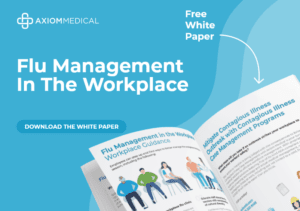Workplace safety has changed dramatically over the past half century. Safety used to be all about following the rules and checking boxes. Now, it’s about getting employees involved, sharing responsibility, and learning together.
Each stage of this evolution reflects broader economic, regulatory, and social shifts—from the rise of federal safety standards in the 1970s to the modern emphasis on psychological safety and proactive risk management.
1. 1970s–1980s: The Compliance Era
The establishment of the Occupational Safety and Health Administration (OSHA) in 1970 marked a turning point in U.S. workplace safety. For the first time, employers were legally required to provide safe working conditions. During the following decade, organizations focused heavily on meeting federal and industry standards—writing procedures, conducting inspections, and documenting compliance.
Safety departments were often isolated from operations, and success was measured by injury and illness rates. The dominant goal was to avoid fines and litigation, not necessarily to improve day-to-day safety behaviors. This era built the foundation of formalized safety management but did little to engage workers in the process.
2. 1990s: The Rise of Behavioral Safety
By the 1990s, industries such as manufacturing, construction, and energy recognized that compliance alone wasn’t preventing incidents. The focus shifted toward Behavior-Based Safety (BBS) programs, pioneered by researchers like E. Scott Geller and companies such as DuPont.
These initiatives emphasized observation, feedback, and reinforcement of safe behaviors. The logic was simple: incidents are caused less by missing procedures and more by inconsistent human behavior.
While BBS improved awareness and reduced some injuries, it also drew criticism for focusing too narrowly on individual behavior without addressing systemic issues like workload, supervision, and culture. Still, it represented a major move beyond compliance—and toward understanding how people shape safety outcomes.
3. 2000s: Integration and Systems Thinking
In the early 2000s, high-profile disasters such as the BP Texas City explosion (2005) and Upper Big Branch Mine disaster (2010) exposed the limits of behavior-only approaches. Investigations found that organizational culture, communication breakdowns, and management decisions played critical roles.
In response, safety professionals began adopting systems-based models like the Safety Management System (SMS) and the Plan-Do-Check-Act cycle. International frameworks such as OHSAS 18001 (launched in 1999) and later ISO 45001 (2018) formalized this integration. Safety was increasingly viewed as part of overall business management—connected to quality, performance, and leadership.
4. 2010s: Culture and Engagement Take Center Stage
During the 2010s, research and practice converged on a new insight: engaged employees are safer employees. The conversation expanded from compliance and systems to culture—the shared values, beliefs, and norms that shape how people behave when no one is watching.
Two major developments drove this shift:
- Human and Organizational Performance (HOP): Emerging from the energy and aviation sectors, HOP reframed human error as a predictable outcome of system design, not individual negligence.
- Employee engagement movement: Broader corporate research (e.g., Gallup’s State of the American Workplace reports) linked engagement to productivity, retention, and safety outcomes.
Leaders began investing in psychological safety, open reporting, and participatory risk assessments—treating employees not as rule-followers, but as partners in risk management.
5. 2020s: Data, Well-Being, and Proactive Safety
In the current decade, the concept of safety culture continues to expand. Organizations now leverage digital tools, predictive analytics, and real-time data to identify leading indicators of risk before incidents occur.
At the same time, the COVID-19 pandemic accelerated awareness of employee health and well-being as part of safety. Mental health, fatigue, and stress management are now seen as integral to total worker safety.
The best-performing organizations use engagement data, wearable technology, and continuous feedback loops to build adaptive, learning-focused cultures that prevent both physical and psychological harm.
6. The Takeaway: Engagement Is the New Compliance
Safety culture’s evolution mirrors broader shifts in work itself—from rigid, compliance-focused hierarchies to collaborative systems that empower participation.
The organizations that lead today treat safety not as a regulatory burden, but as a measurable indicator of trust, engagement, and operational excellence.
Want to explore this topic further? Join us on Thursday, November 06 for our webinar “Safety Culture Shift: From Must-Do to Mission Driven” with Bryan Cott, Sr. HSE Manager at ChampionX (an SLB company), and his Axiom account manager, Cathy Tran, where they will share how their partnership has reshaped his org’s safety culture. They’ll be joined by Dr. Scott Cherry, Chief Medical Officer, and Dara Wheeler, Chief Marketing Officer & EVP of Product/Innovation, to discuss how organizations can move beyond “must-do” compliance into a mission-driven approach that protects both people and performance.










